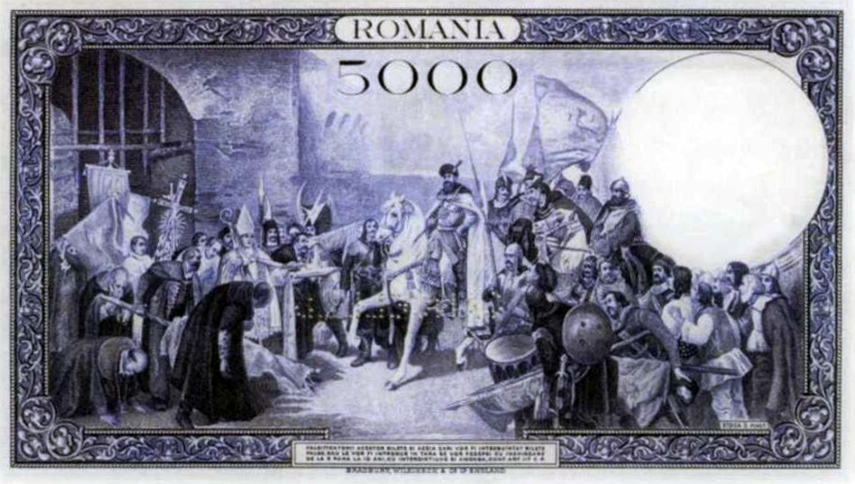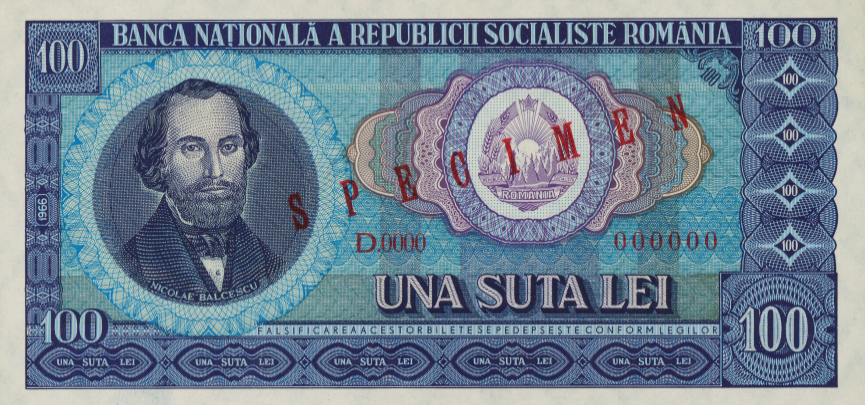The leu became the national currency of Romania according to the Law for the establishment of a new monetary system and for manufacturing of national currencies, adopted in 1867. The Romanian state entrusted the National Bank with the exclusive privilege of issuing bearer bonds (banknotes). From that moment on, the history of the leu could no longer be separated from the history of the central bank.
It is undoubtedly fascinating to make an incursion into the world of money and this is what our exhibition The History of the Romanian Leu tries to do. The display is located in the western wing of the hall connecting the two palaces that constitute the bank’s headquarters. The purpose of the exhibition is to present Romanian monetary history and to call to mind the bank’s role in supporting the national currency.

The History of the Romanian Leu exhibition
The visitors can admire a complete series of coins issued by the Romanian state, starting in 1867 and until the denomination of the leu in 2005, as well as the main types of banknotes.
The first Romanian coins issued were fractional coins made of bronze (1, 2, 5 and 10 bani), of silver (50 bani, 1 leu and 2 lei), as well as the gold “poli” of King Carol I. Promissory notes were issued in 1877, featuring a French design and focusing on the Latin origin of the Romanian people. The first banknotes issued by the National Bank after 1881 continued the same style.

“Paper coins”, 10 bani, 1917
The showcase dedicated to currency circulation during World War I reflects the changes in the monetary structure. Metal coins nearly went out of the market, due to inflation and to people’s tendency of hoarding silver coins, considered to be more secure. The lack of change on the market would be compensated by the National Bank, by launching banknotes with low nominal values (1, 2 and 5 lei). It is also here that “paper coins” issued by the Ministry of Finance catch the visitor’s eye. They are considered to be the smallest banknotes in the world.
After the war and after overcoming the effects of the world-wide economic depression, Romania went through a period of economic flourishing. The banknotes’ layout became increasingly richer and new themes came up; references to the Romanian dynasty and to national unity became increasingly apparent.

5000 lei banknote, 1931

1000 lei banknote, 1934

1 leu coin, 1966
During World War II, nickel coins were withdrawn and melted, so that the resulting material could be used in the warfare industry. They were replaced by zinc coins. For a brief while, just like in other occupied countries, the Soviet army issued their own occupation lei, with their circulation being limited to the period of the Soviet troops’ crossing the Romanian territory.
There were profound transformations in Romanian society after the communist regime came to power, as it can be seen in our exhibition.

100 lei banknote, 1966
The National Bank became subordinate to the Ministry of Finance and had to agree with a design featuring values that were not in line with the bank’s tradition. The banknotes’ layout featuring royal and Latin representations was altered to reflect the new people’s power and the revolution idea.
The last showcase in the exhibition is dedicated to the period after December 1989. The first banknote issued after the political change was released in January 1991 and was dedicated to Constantin Brâncuși. Many more Romanian personalities were later featured on banknotes: Grigore Antipa, Mihai Eminescu, Lucian Blaga, George Enescu, Nicolae Grigorescu, Aurel Vlaicu, I. L. Caragiale.
In 1999, the first polymer banknote was launched (2000 lei – Total Eclipse of the Sun of 11 August 1999). This material represents the most advanced technological developments in contemporary banknotes’ fabrication and has several advantages as compared to the traditional paper: higher security features can be incorporated, while the banknotes’ circulation life is longer (banknotes are four times more durable), they are cleaner, waterproof and more resistant to bacteria or other impurities, as well as recyclable.

First Romanian polymer banknote, 2000 lei – Total Eclipse of the Sun of 11 August 1999
Over the later years, paper banknotes were gradually replaced, so that with the 2005 denomination of the lei, all banknotes in circulation were made exclusively of polymer.

100 lei coin, “Ferdinand 1922”
The exhibition dedicated to the national currency also includes a special section with anniversary or commemorative Romanian issues of gold, from 1906 to 1944. The limited issue period renders the items even more valuable, the Museum of the NBR holding the largest collection of such pieces in Romania.

“Our Transylvania” medal, 1944
The anniversary medal Our Transylvania, informally known also as “The Little Rooster” was minted in 1944, with an issue of 1,000,000 pieces, and was part of the Loan for National Reconstruction. Even though it does not hold any nominal value, the medal is in line with the European monetary system, by featuring almost all of the details on the French 20 francs coin.

“The Jewelry Guilder”, 1939
The anniversary issue One Hundred Years since the Birth of King Carol I (1939) includes three types of coins: 20 lei, 100 lei, as well as a large piece, with a diameter of 41 mm and weighing 42 grams, the equivalent of 12 ducats, known also as “The Jewelry Guilder”. An interesting fact is that this issue did not serve an official purpose; King Carol II only offered it to people close to him and to several high ranking civil servants.